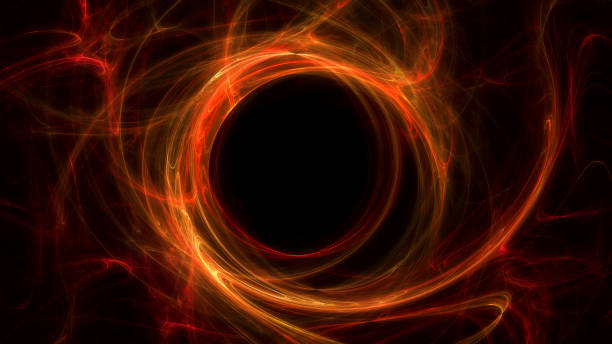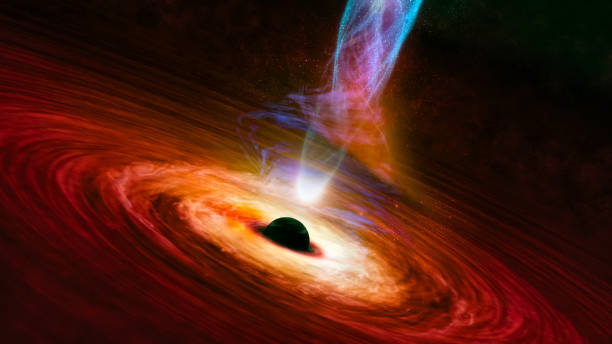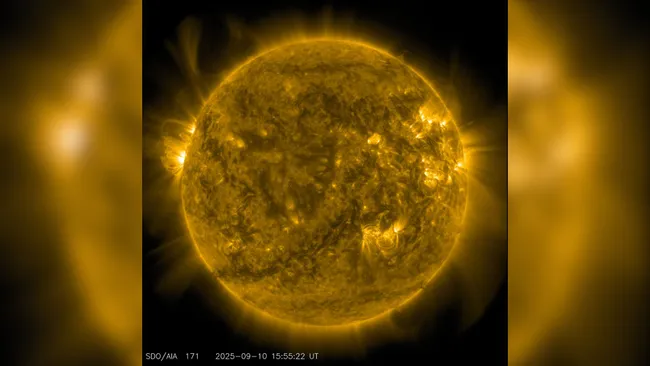Exploding Black Hole Prediction has taken the astronomy world by storm, as a groundbreaking new study suggests there is a 90% chance of detecting a black hole explosion within the next decade. This stunning claim comes from researchers at the University of Massachusetts Amherst, who argue that so-called “primordial black holes” (PBHs)—microscopic remnants from the early universe—may be far more detectable than previously believed.
If confirmed, such a discovery would do more than just rewrite our understanding of the cosmos—it would provide the first-ever direct evidence of Hawking radiation, the theoretical phenomenon proposed by Stephen Hawking that suggests black holes gradually evaporate over time. This would not only solve one of the longest-standing mysteries in astrophysics but also offer clues about the nature of dark matter, potentially reshaping modern physics.
Primordial Black Holes and the Early Universe
Primordial black holes are thought to have formed within the first fraction of a second after the Big Bang, when regions of space collapsed under extreme density fluctuations. Unlike stellar black holes, which form from collapsing stars, PBHs are incredibly tiny—some no bigger than an atom—but still pack enormous gravitational power.
For decades, scientists have speculated about the existence of these mini black holes, but finding one has remained frustratingly elusive. Detecting a PBH would be like looking back to the universe’s very first moments, providing a rare glimpse of cosmic conditions that existed 13.8 billion years ago.
The new research, however, changes the narrative. Previously, scientists assumed that witnessing a PBH explosion would be nearly impossible, occurring maybe once every 100,000 years across the entire observable universe. The exploding black hole prediction now dramatically shortens that timeline, suggesting we could see one within the next ten years.

The Role of Dark-Charged Primordial Black Holes
The University of Massachusetts Amherst study introduces an innovative concept known as “dark-charged primordial black holes.” According to the model, PBHs could carry a tiny charge under a hypothetical dark-sector force.
This model also proposes the existence of a very heavy “dark electron”—a particle that interacts under this dark force but not with ordinary matter. These dark electrons would surround a PBH, stabilizing it for much longer than expected. The result: PBHs would last long enough to exist today but would still be on the brink of collapse.
When they finally evaporate, their last moments would release an intense burst of high-energy particles, including gamma rays and potentially dark matter candidates. Under this new prediction, such final bursts should occur roughly once every decade, rather than once every hundred millennia.
This is why astronomers now believe there is over a 90% chance of observing one before 2035.
How Astronomers Will Detect the Final Explosion
The exploding black hole prediction is not just theoretical optimism. Researchers believe that existing technology is already capable of catching the telltale signs of a PBH’s demise.
The final moments of a black hole’s evaporation would produce a quick flash of Hawking radiation, releasing a zoo of subatomic particles and a sharp burst of gamma rays. These gamma-ray flashes would last only fractions of a second but could be detected by both space-based and ground-based telescopes.
NASA’s Fermi Gamma-ray Space Telescope, the European Space Agency’s INTEGRAL observatory, and other high-energy detectors are already scanning the skies for such brief events.
“Detecting one of these explosions would be the first direct evidence of Hawking radiation,” says Joaquim Iguaz Juan, a physicist at UMass Amherst involved in the study. “It would completely revolutionize physics and rewrite our cosmic history.”

Why This Matters for Physics and Dark Matter Research
If the exploding black hole prediction comes true, it would have enormous consequences for multiple fields of science.
- Confirmation of Hawking Radiation: For nearly 50 years, Hawking radiation has remained a theoretical idea. Seeing it in action would prove that black holes do eventually evaporate, solving one of the most profound mysteries in theoretical physics.
- Understanding the Early Universe: PBHs may act as natural probes of the early cosmos. By measuring their properties, astronomers could learn about the density fluctuations that shaped the first moments after the Big Bang.
- Clues to Dark Matter: The presence of dark-charged PBHs and dark electrons could open an entirely new window into dark matter research. These elusive particles, which make up about 85% of the universe’s mass, have never been directly observed.
- Implications for Particle Physics: The detection would offer insights into quantum gravity and physics beyond the Standard Model, potentially leading to new theories about how fundamental forces interact.
The Global Effort to Watch the Skies
To maximize the chance of detection, astronomers are collaborating worldwide to monitor high-energy events. Networks like the Gamma-ray Coordinates Network (GCN) allow scientists to share data instantly when unusual flashes are detected, enabling rapid follow-up observations.
Large-scale projects such as the Cherenkov Telescope Array (CTA) are also being built to provide unprecedented sensitivity to gamma-ray bursts. If an exploding PBH occurs nearby, these instruments would be able to pinpoint its location and measure its energy spectrum in detail.
“This is a once-in-a-lifetime scientific opportunity,” says one astrophysicist involved in gamma-ray research. “We are essentially sitting at the edge of a discovery that could redefine our understanding of black holes, dark matter, and even the fabric of space-time itself.”
Source: Gadgets360 – Astronomers Predict 90% Chance of Spotting an Exploding Black Hole


